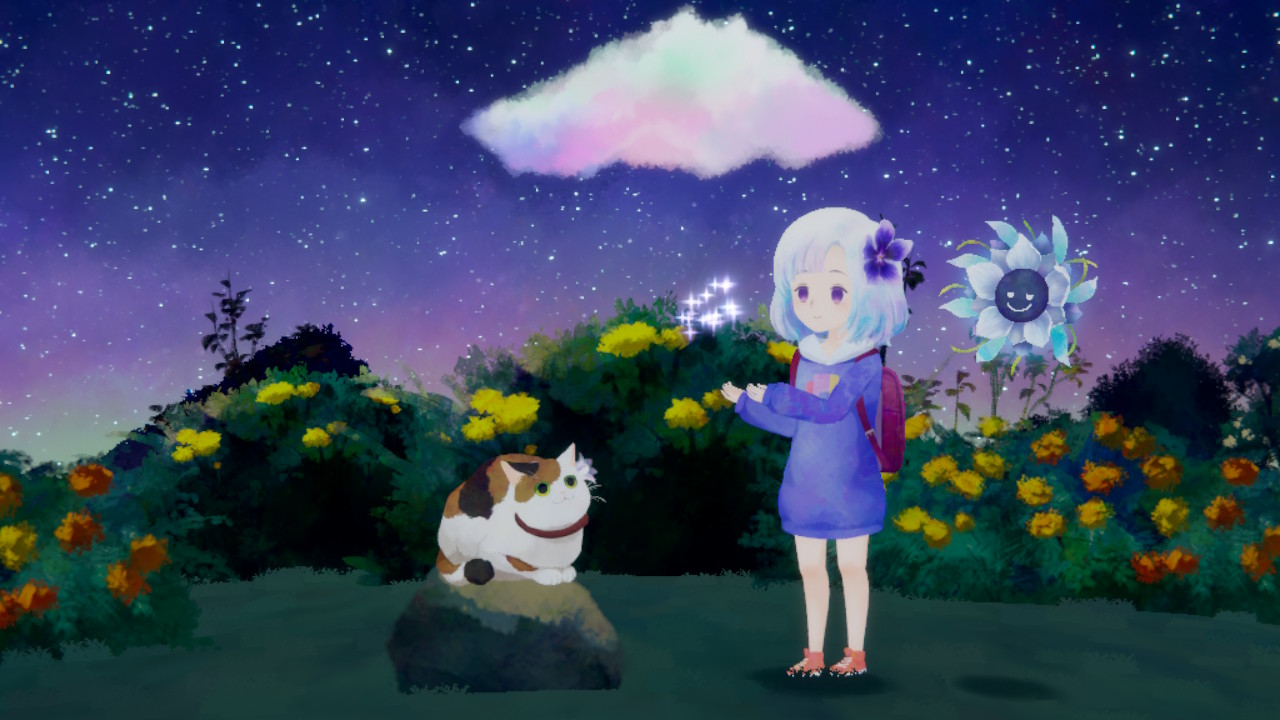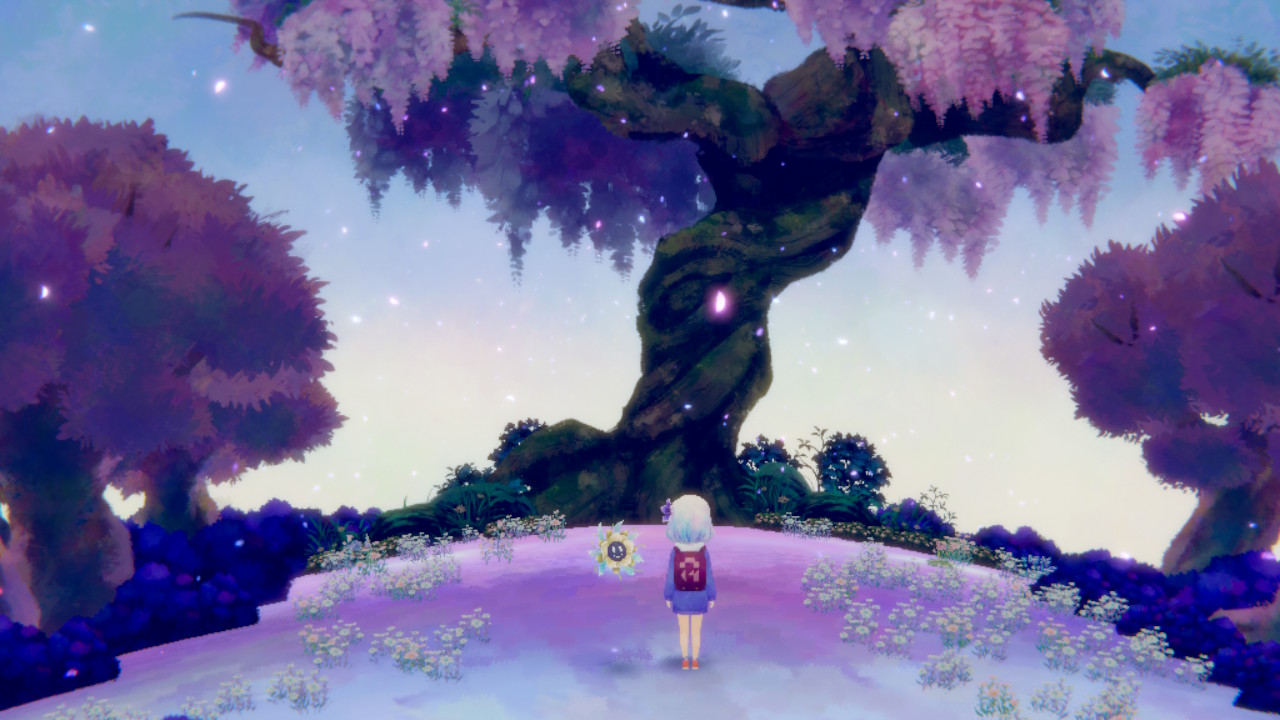It's such a perfect day. I'm glad I spent it with you.
In Sumire, you play as a teenage girl whose dad has just left her and her mother, and whose grandmother has passed away. This has caused Sumire to feel down and unmotivated. She has stopped seeing her friends, she doesn’t talk much with her mom, and she has become very monotone.
That is, until a flower comes to get her out of the house to enjoy a “perfect day.”
The flower promises Sumire that it will fulfill her greatest wish, but only if she is able to explore the town and complete a to-do list. The twist is that she only has one day to do so. The sky will change throughout the day, and when sundown arrives, time is up.
The list contains some major story events, while also some side quests you can complete to help the characters you meet, such as a frog or a scarecrow. How you treat these side characters will determine whether you have food or bad karma. The decisions are very easy to make, however, with almost no moral ambiguity. You’re either nice or you’re not.
For example, one of the first decisions you come across is how to help a scarecrow who’s being bullied by crows, who will disturb your day throughout the game. He will ask you to come back to him before noon, and if you choose to see him again, you will play a mini game where you switch the rude things the crows say into nicer words. Afterwards, he will ask you for a cool hat, and if you give it to him, you will recieve good karma. There are numerous light minigames sprinkled throughout Sumire. None are very challenging, but they do a good job of breaking up the back and forth exploration.
Other choices you have to make include some small decisions such as whether to help a turtle or rabbit win a race. There are some bigger, more impactful choices, too, and I’ll let you find those for yourself. I should also point out that not all of the decisions you make and quests you complete involve cute animals; there’s plenty of human interaction, too.
The controls of the game are very easy. You walk with the left analog stick, using B if you want to run, A to interact with characters and objects, and X to open your list. I had no problems with these controls and got a hang of them right away. The game will show you when and how to use these controls almost right off the bat.
The visuals are super pretty with a watercolor paint style, and the scenery is all fun to look at, especially the skies and wisteria tree. In a nice design decision, the environment you walk through has a distinct curve to it, as if to remind you that the world is a small place.
The soundtrack is also super pretty, and the whole artistry of it really captures the tender vibe of the town and of Sumire herself.
Sumire should take only a few hours to play, which makes the $15 asking price a bit much. Still, playing through this visual novel is simultaneously calming and touching, and it can be exciting in parts. More importantly, you’ll finish it wanting to live each day to the fullest.
Review: Sumire (Nintendo Switch)
Good
Sumire is a visual novel adventure that should appeal to anyone who has experienced loss or just ever felt disconnected from the world. It’s perhaps over too quickly for the price, but it’s an enjoyable, fulfilling adventure while it lasts.







June 14, 2021
[…] post Review: Sumire (Nintendo Switch) appeared first on Pure […]